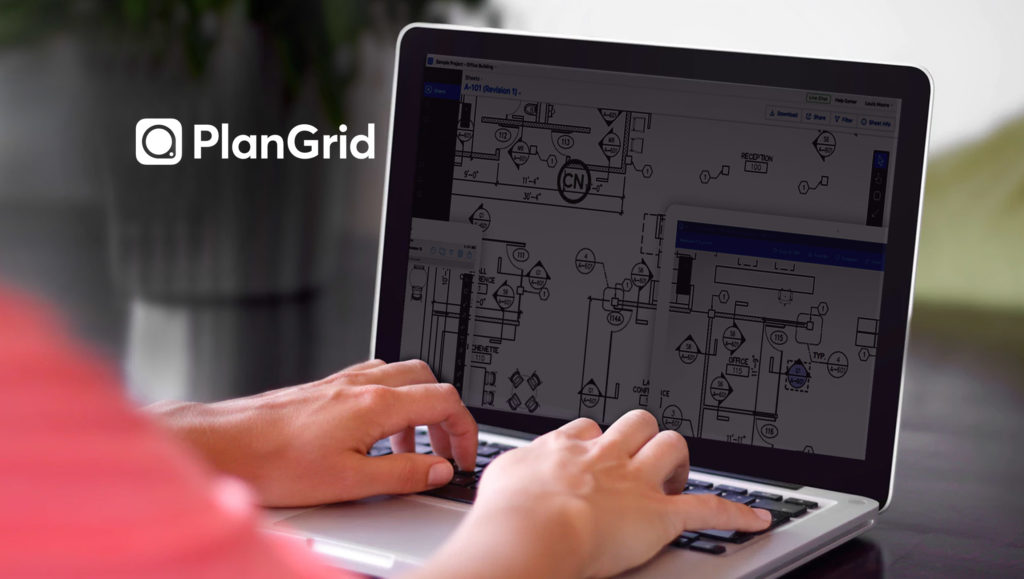One of the construction industry’s most widely-used mobile technologies makes critical data accessible in the field with first major Autodesk integration after acquisition
PlanGrid, an Autodesk company and a leader in construction productivity software, introduced PlanGrid BIM, a powerful new product integration with Autodesk Revit that enables users to immediately access Building Information Modeling (BIM) data, in either 2D or 3D, directly within PlanGrid on their mobile devices. Construction teams and facilities managers can now drill down into rich BIM data in an easy-to-use 2D interface or 3D environment, empowering the field to build with greater accuracy, avoid rework and make decisions faster and with more confidence.
“BIM has transformed the way architects and engineers design, and Revit is the industry standard during pre-construction,” said Jim Lynch, vice president and general manager, Autodesk Construction Solutions. “PlanGrid’s integration of Revit empowers its users to take full advantage of BIM beyond pre-construction with a wealth of data immediately at their fingertips. This joint initiative, the first of many following our acquisition of PlanGrid, will help Autodesk fulfill our mission to deliver a comprehensive, integrated platform that seamlessly connects the office, the trailer and the field.”
Read More: How Microsoft Plans to Fight Carbon Emissions with an AI Tech-First Approach
PlanGrid BIM connects rich BIM data from the design process to construction and operations
Architects and engineers who design construction projects using BIM create 3D models to act as a virtual representation of how complicated work should be installed and building assets should interact. Models are embedded with rich property data such as the height of a counter, material type of a wall or manufacturer details of a lighting fixture. But when these models are sent out to the field, they’re “flattened down” into PDFs, and the data is lost to the teams doing the physical work of building or maintaining facilities. This loss of data, coupled with a lack of 3D visualization in the field, can lead to critical errors, lost time and rework.
PlanGrid BIM empowers construction and facilities teams to make better decisions in real-time, using the most comprehensive data available and a seamless transition between 2D and 3D.
With PlanGrid BIM, users can see BIM data properties within familiar 2D drawings or tap into 3D to better visualize assets within the surrounding environment — all from within PlanGrid’s software. Encompassing three core elements, PlanGrid’s new BIM functionality includes:
- BIM-enabled Sheets: Users can tap objects to access BIM data properties, such as an object’s dimensions, material type or manufacturer details, all within the familiar 2D environment.
- 3D BIM Viewer: With a simple tap, users can instantly transition into a 3D view of a specific object, even if offline. The viewer, currently in open beta, includes features such as zoom and snap tools for taking measurements between model objects.
- Revit Integration: Sheets are published directly from Revit into PlanGrid, guaranteeing accurate BIM data, as well as sheet titles and numbers; drawings continue to include PlanGrid features such as automatic callout detection and hyperlinking.
With rich data immediately at their fingertips, field teams can decrease miscommunication, reduce defects at handover, increase safety and overall quality of work.
“Communication on a jobsite can be challenging, particularly when team members may be missing vital information from interacting trades. A plumber may consult with a mechanical foreman several times before installing risers near HVAC ducts, and the build-out may still take longer than expected and require rework,” said Kendall Pouland, Director of Technology and Innovation at Tellepsen. “With PlanGrid’s new BIM functionality, any construction team member can quickly find all the details they need right from their mobile device. And because our teams are already using PlanGrid on a daily basis, it will be easy for them to quickly learn and take advantage of this powerful new functionality.”
“We know field workers and facilities teams need mobile solutions that can be used on the job site, which is why we built PlanGrid’s software with a mobile-first approach right from the start. We saw immediate adoption, and now more than 1.5 million projects around the world are using our technology,” said Tracy Young, head of PlanGrid at Autodesk. “We’re now bringing our mobile-first approach to BIM, empowering teams to build right the first time. With PlanGrid BIM, we are not only helping contractors work more efficiently, we’re also enabling architects to maintain their design intent and owners to reduce lifecycle costs. We’re delivering on our commitment to building powerful and easy-to-use software for the field, and developing an integrated workflow with Autodesk products. We’re changing the industry, again.”
PlanGrid BIM is included with all PlanGrid subscriptions and is available today on iOS and web, with functionality on Android and Windows to follow in the future. PlanGrid will continue furthering its aim to help increase construction productivity with features to be added in the future that include integration with other design and project review software such as Autodesk Navisworks, two-way synch to update the master BIM model with data from the field, and the ability to generate tasks, RFIs and punchlists from model data.





















